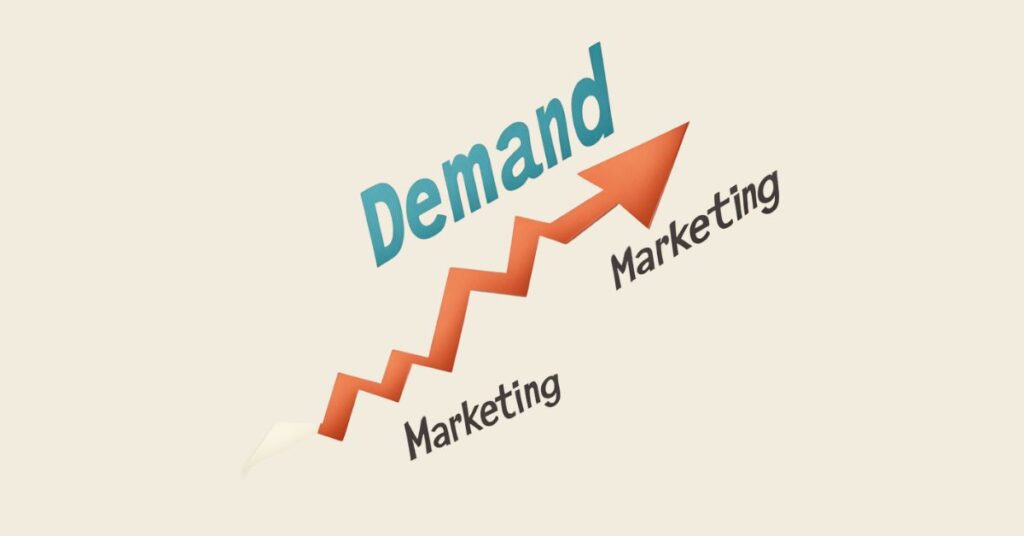Introduction: The Truth About What Really Fuels Growth
For decades, marketing has been viewed as the driving force behind business success. But there’s a deeper truth that often gets overlooked: without real customer demand, marketing is just noise. In this article, we uncover why demand isn’t just important — it’s the true engine of sustainable growth. If you want to stop wasting time and budget, it’s time to rethink what really matters.

Understanding Demand: More Than Just Interest
Demand refers to the genuine need or desire for a product or service, backed by purchasing power. It’s not just about awareness or interest; it’s about intent and action. Without demand, even the most creative marketing efforts fall flat.
Marketing Without Demand: A Recipe for Waste
Companies often invest heavily in marketing campaigns that fail to convert because there is no real demand. This leads to wasted budgets, poor ROI, and disillusionment with marketing efforts. True growth comes from aligning marketing with existing or nurtured demand.
The Demand-First Framework
A demand-first strategy focuses on understanding market needs before deploying marketing tactics. It includes:
- Market research and validation
- Product-market fit testing
- Customer development interviews
- Early adopter engagement
Case Study: Dropbox
Dropbox didn’t start with mass marketing. It began with a simple explainer video and a waiting list to gauge demand. The overwhelming response proved product-market fit before they scaled marketing.
Demand vs. Marketing: Which Comes First?
Marketing should amplify existing demand, not create it from scratch. Think of demand as the spark and marketing as the oxygen that turns it into a flame. Without the spark, marketing has nothing to ignite.
How to Identify Real Demand
- Keyword research and search trends
- Customer feedback and surveys
- Competitor analysis
- Waitlists and pre-orders
The Psychology of Demand: Why People Buy
Demand is rooted in human psychology. People buy based on pain points, desires, and urgency. Marketing can trigger action, but only if there’s a foundational need.
Creating Products People Actually Want
Companies should focus on solving real problems. This means developing solutions around customer needs, not what the business wants to sell. Demand comes from relevance and value.
How Marketing Can Support Demand
When demand exists, marketing becomes exponentially more effective. It can:
- Accelerate word-of-mouth
- Increase conversions
- Improve brand loyalty
- Generate referrals
The Role of Product-Led Growth

In many successful companies, the product itself drives demand. This model, known as product-led growth, relies less on traditional marketing and more on delivering exceptional value that naturally attracts users.
Real-World Example: Tesla
Tesla spent minimal money on advertising. Instead, it focused on building a product people were deeply interested in. Demand drove media coverage, user referrals, and social media buzz.
Demand Creation vs. Demand Capture
There’s a difference between creating demand and capturing it. Capturing demand involves meeting customers where they already are (SEO, PPC, marketplaces), while creation requires education, time, and more risk.
Why Startups Should Obsess Over Demand
Startups with limited resources must validate demand before investing in marketing. Early-stage marketing without proof of demand often leads to premature scaling and failure.
Building a Demand-Driven Business Model
A business that prioritizes demand aligns every part of its operation around customer needs. From product development to customer service, demand is the guiding principle.
The Future: Demand-Led Innovation
In the future, the most successful businesses will innovate based on demand signals. AI, data analytics, and user behavior insights will drive this evolution.
Conclusion: Growth Begins with Truth
The truth about growth is simple but often ignored — demand must come first. Marketing is a powerful amplifier, but without something to amplify, it falls flat. By shifting your focus to demand-first thinking, you’ll not only reduce waste but also build products and strategies that customers truly want. In an age of noise, demand is the signal that sets real growth apart.
FAQs
1. Can marketing create demand? Yes, but it’s often expensive and risky. Capturing existing demand is more efficient and sustainable.
2. How can I test for demand before launching a product? Use landing pages, surveys, MVPs, and waitlists to measure interest and gather feedback.
3. What’s the difference between marketing and demand generation? Marketing covers all promotional activities, while demand generation specifically aims to drive interest and lead acquisition.
4. Is demand more important in B2B or B2C? It matters in both. However, B2B often requires deeper validation due to longer sales cycles and higher investments.
5. How do I shift to a demand-first strategy? Start by talking to your customers, analyzing market trends, validating your product idea, and only then invest in scaling marketing efforts

